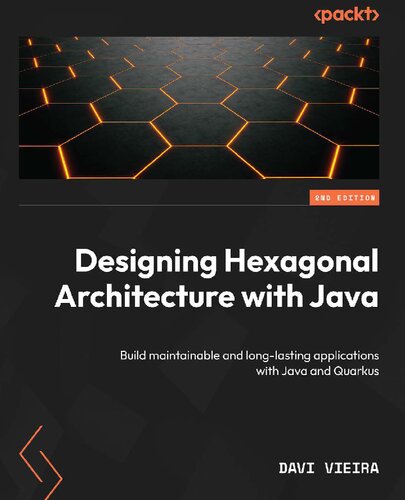

Most ebook files are in PDF format, so you can easily read them using various software such as Foxit Reader or directly on the Google Chrome browser.
Some ebook files are released by publishers in other formats such as .awz, .mobi, .epub, .fb2, etc. You may need to install specific software to read these formats on mobile/PC, such as Calibre.
Please read the tutorial at this link: https://ebookbell.com/faq
We offer FREE conversion to the popular formats you request; however, this may take some time. Therefore, right after payment, please email us, and we will try to provide the service as quickly as possible.
For some exceptional file formats or broken links (if any), please refrain from opening any disputes. Instead, email us first, and we will try to assist within a maximum of 6 hours.
EbookBell Team

0.0
0 reviewsLearn to build robust, resilient, and highly maintainable cloud-native Java applications with hexagonal architecture and Quarkus
Key FeaturesWe live in a fast-evolving world with new technologies emerging every day, where enterprises are constantly changing in an unending quest to be more profitable. So, the question arises — how to develop software capable of handling a high level of unpredictability. With this question in mind, this book explores how the hexagonal architecture can help build robust, change-tolerable, maintainable, and cloud-native applications that can meet the needs of enterprises seeking to increase their profits while dealing with uncertainties. This book starts by uncovering the secrets of the hexagonal architecture’s building blocks, such as entities, use cases, ports, and adapters. You’ll learn how to assemble business code in the domain hexagon, create features with ports and use cases in the application hexagon, and make your software compatible with different technologies by employing adapters in the framework hexagon. In this new edition, you’ll learn about the differences between a hexagonal and layered architecture and how to apply SOLID principles while developing a hexagonal system based on a real-world scenario. Finally, you’ll get to grips with using Quarkus to turn your hexagonal application into a cloud-native system.
By the end of this book, you’ll be able to develop robust, flexible, and maintainable systems that will stand the test of time.
What you will learnThis book is for software architects and Java developers looking to improve code maintainability and enhance productivity with an architecture that allows changes in technology without compromising business logic. Intermediate knowledge of the Java programming language and familiarity with Jakarta EE will help you to get the most out of this book.
Table of Contents(N.B. Please use the Look Inside option to see further chapters)